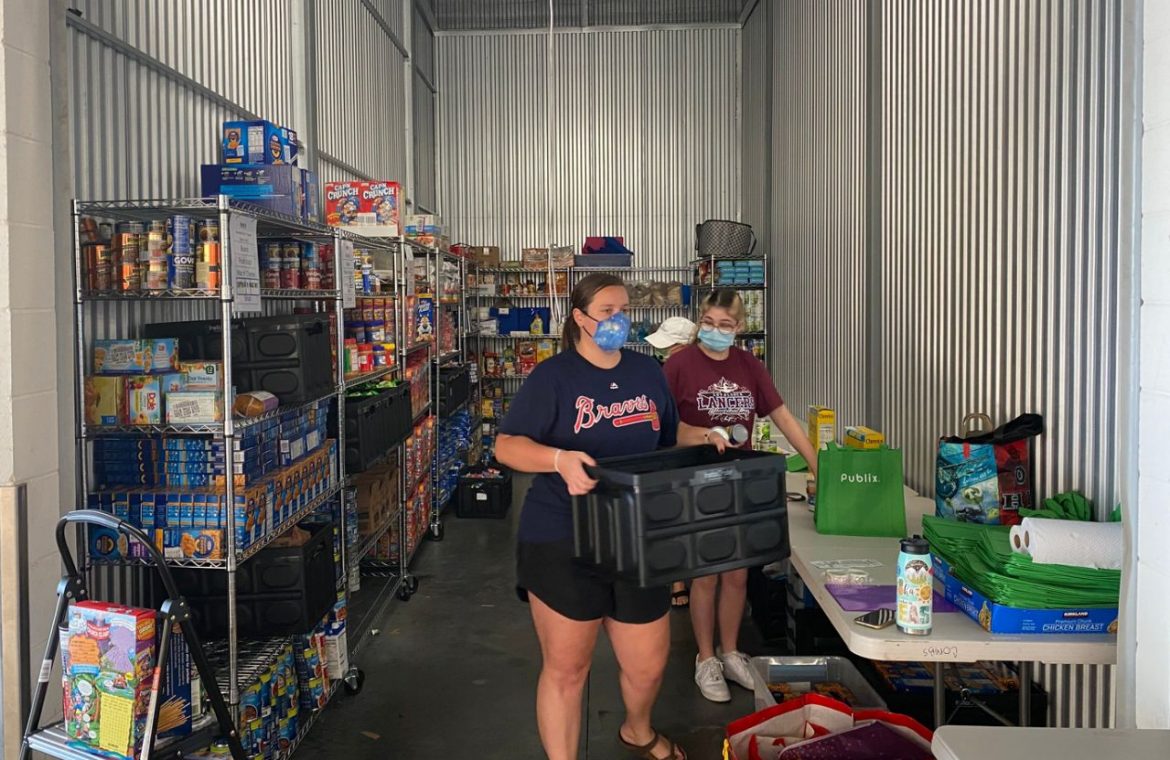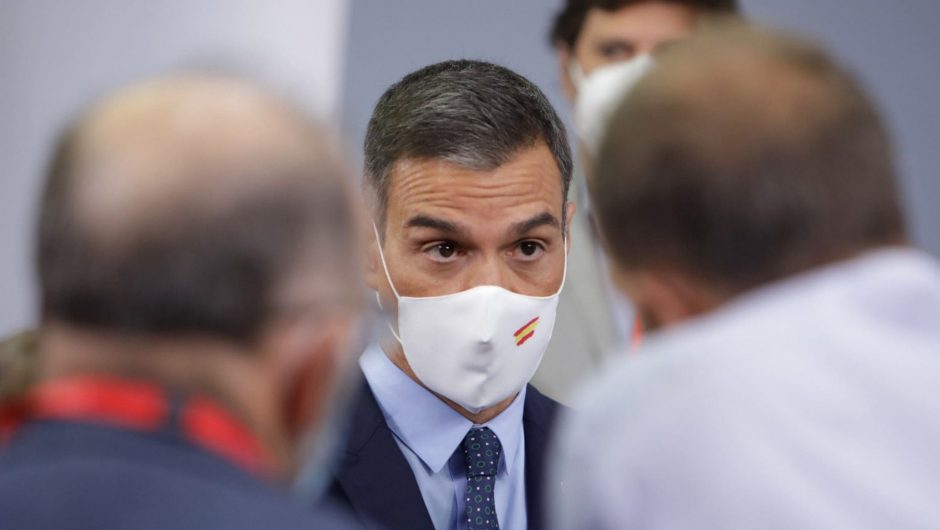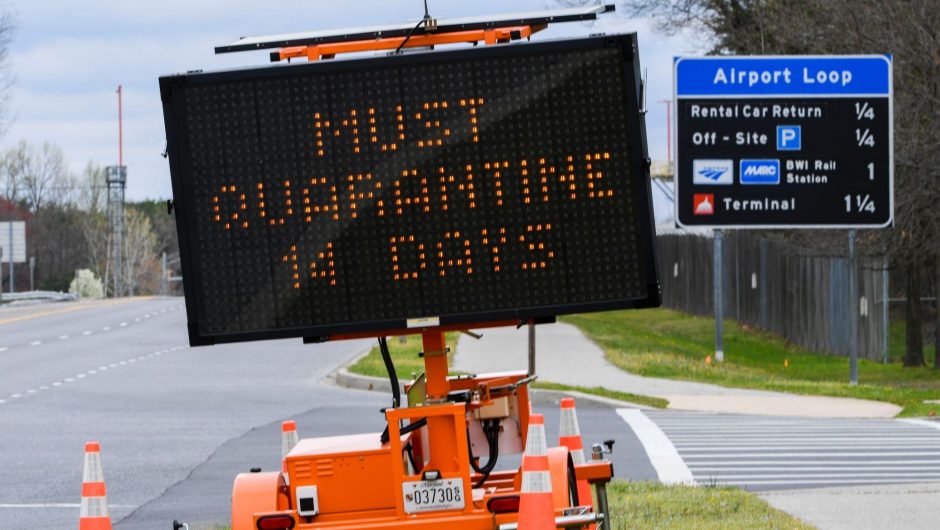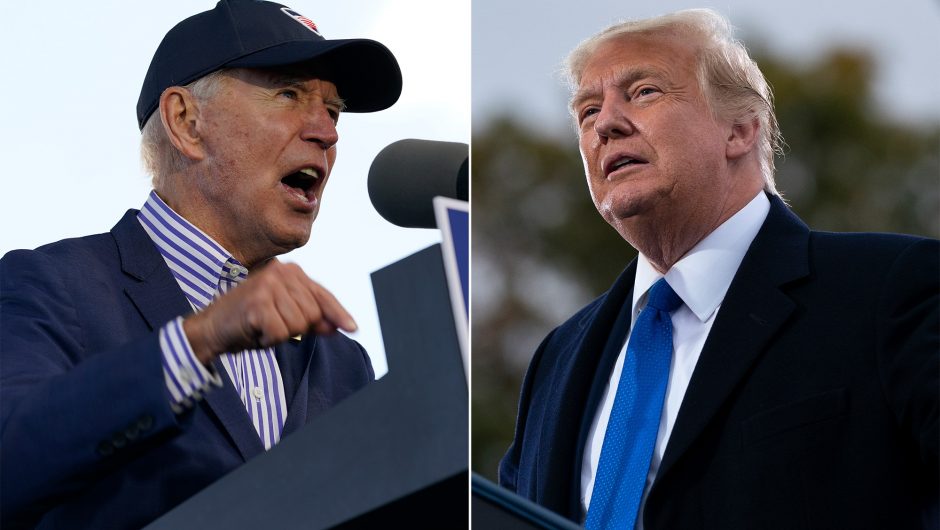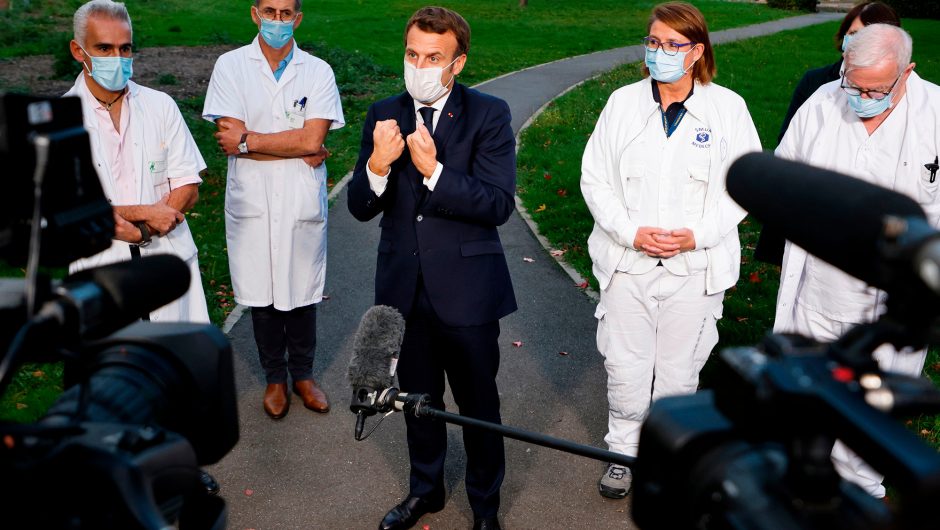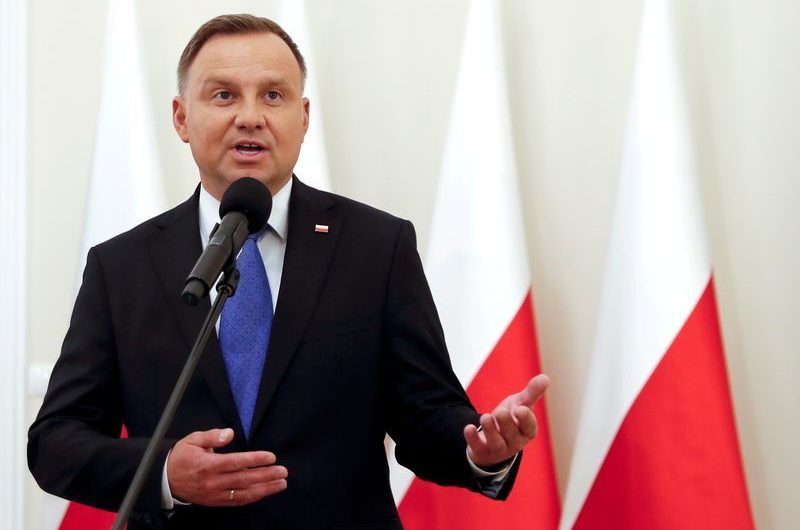Emily Lartigue started a food bank for Disney employees who have been laid-off or furloughed during the pandemic. (Richard Hall / The Independent)
At a self-storage garage in the suburbs of Orlando, a dozen or so volunteers are lining up to fill bags with groceries. This pop-up food bank has grown steadily over the past few months. The new helpers are introducing themselves.
“I’m here to help out my fellow cast members,” says one, 52-year-old Tammy Akers. “I was recently laid off so I may need help myself soon,” she adds.
Cast members is what Disney employees call themselves. No matter what their job, most see themselves as part of the same onscreen universe that birthed an entertainment empire. But that empire is crumbling. Akers is one of thousands of cast members who have been laid off or furloughed in recent months here in central Florida, a casualty of the havoc wrought by the coronavirus on the tourism industry.
This food bank was started specifically to help the growing number of them who are struggling to put food on the table after losing their jobs.
Walt Disney World, just down the road from where these volunteers are gathered, is Florida’s biggest employer. More than 60,000 worked there before the pandemic hit, and many thousands more in the tourism-driven economy that surrounds the park in every direction — hotels, restaurants, bars, malls and gift shops.
A Disney gift outlet store on the highway near Disney WorldRichard Hall / The Independent
The park closed in March when the pandemic began to bite and began a phased reopening in July. Disney furloughed more than 100,000 of its 223,000 global staff back in April, including thousands here in Florida. Now the company is making permanent cuts. Just last week it announced 9,000 part-time workers would be let go, bringing the total number of laid-off employees to 15,000 in the state since the pandemic began.
Akers worked at Disney World for 25 years. She was a housekeeping manager, a full-time salaried employee just three years away from retirement when she was furloughed back in April and eventually laid off in early October. Her entire life has now been turned upside down.
“It’s hard. You just gotta count your pennies. A lot of people have their families to support too, that’s why I came down to help,” she says. “You just think of Disney as this place that never closes. They’ve only closed once a year, twice a year if a hurricane comes through. I never thought it would be long term.”
Story continues
Akers lives an hour away from the food bank, but comes here once a week to keep her mind occupied. Since losing her job, she has had a lot of time to think, and worry. Her employment with Disney officially ends next month and she has yet to find other work. She hasn’t made use of the food bank herself yet, but she worries it’s only a matter of time.
“I’m waiting for that moment when I get cut off,” she says, which comes next month when her employment officially ends. “I’ve looked for work. I’ve heard of a company that is hiring former Disney people, but it’s a relocation. That’s another thing to think about. Do I just wanna pack up everything and go to another area?”
There are now thousands of former Disney employees like Akers now struggling to find work in a bleak economic environment, with a paltry safety net provided to them by the state of Florida. The food bank where Akers is volunteering was started in April by Emily Lartigue, a Disney human resources manager, to help cast members impacted by the coronavirus; it has grown rapidly as layoffs have increased and now provides 300 grocery bags a week
“The people most in need are families. When mom and dad are both laid off, those are the repeat customers,” says Lartigue. “They’re frontline cast members who were working paycheck to paycheck.”
The situation for laid-off workers here is exacerbated by the fact that unemployment benefits in Florida are among the lowest in the country — capped at just $275 a week for a maximum of 12 weeks. That translates to $6.88 an hour for full-time employees. It has been at that same rate for decades.
Florida hit a historic high in unemployment in April, when 13.8 per cent were out of work. The state has processed more than 4 million unemployment claims over the same period. Those numbers have recovered somewhat, but the week ending 10 October saw 44,795 file new unemployment claims.
The drop in tourists has been dramatic. From April to June of this year, the state saw 60 per cent fewer visitors, a drop in visitors of some 20 million. Those numbers haven’t been helped by Florida’s chaotic handling of the pandemic. Governor Ron DeSantis has been a vocal critic of public health measures such as lockdowns and mask mandates (Florida has not introduced a statewide directive on face coverings). He lifted all restrictions on restaurants and businesses last month in an effort to get the economy moving again, but critics say the move will only prolong the pandemic.
Tammy Akers worked at Disney for 25 years before she was laid off in OctoberRichard Hall / The Independent
Today, coronavirus infections are spiking again across the state. On Thursday the state counted 3,356 new cases — the highest in a month. The death toll is close to 100 a day. Nearly 16,000 Floridians have lost their lives to the virus.
The coronavirus is causing similar economic hardship across the United States. According to a recent study by researchers at Columbia University, the number of Americans living in poverty may have grown by eight million since May, despite a slight improvement in the job market as some areas reopen. Poverty rates have grown particularly among Black and Hispanic people, the study found.
In Florida, the little government support that was available to people has been overwhelmed, leaving many with no choice but to turn to food banks like this.
“You had over 70,000 people applying for unemployment at one time,” says Lartigue. “So, as you can imagine, a lot of it was backed up. A lot of people were getting denied for maybe missing a step or their application getting lost in cyberspace.
“I just don’t think the system was prepared for as many people to be furloughed at one time,” she adds, as she directs volunteers to fill bags with cans and cereal.
But it is not just Disney employees that have been impacted by the slowdown. An entire economy that was built up around the park over the years is also failing. On the highways leading to the park entrance, dozens of hotels usually occupied by tourists are now either empty and crumbling or have been filled by the homeless. More than seven large Disney gift outlet stores that line the road are now without customers. Restaurants and bars are also closing.
Lartigue compares the damage that could be done to Orlando and central Florida to the collapse of the auto industry in Detroit.
“When the auto industry tanked the whole city was impacted. That’s similar to what has happened in central Florida, where we are so heavily dependent on travel and tourism and hospitality,” she says.
Other food banks have seen their traffic increasing, too. The Second Harvest Food Bank has reportedly doubled its daily distribution during the pandemic to 300,000 meals a day.
For all their current hardships, many Disney employees — even those who have been laid off — consider themselves lucky to have worked for a company that promoted the idea of its workforce as a family. That ethos created a community among current and former staff that has stepped up to help laid-off colleagues. As well as this food bank, former and furloughed employees have set up Facebook groups where they advertise their new side gigs and businesses. Thousands use the group every day to sell crafts and pitch their services.
Guests stop to take a photo at Magic Kingdom Park at Walt Disney World Resort on July 11, 2020 in Lake Buena Vista, Florida. July 11, 2020 is the first day of the theme park’s phased reopening.Photo by Matt Stroshane/Walt Disney World Resort via Getty Images
But some have also expressed anger at the imbalance of the cuts between the company’s senior management and its frontline workers. Danica Taylor was a character attendant at Disney World for six and a half years. Her main job was working in the Magic Kingdom, specifically, at Enchanted Tales alongside Belle from Beauty and the Beast.
“I got to stand alongside Anna and Elsa for hours and watch kids meet their heroes,” she says. “I was able to see families meet Mickey Mouse for the very first time and cry with them when they said goodbye to Snow White at the end of their vacations.”
Taylor was a seasonal employee, working weekends and holidays, but she planned to keep the job for as long as she could. She was told she was losing her job in an email.
“The email said ‘Dear valued employee.’ After six years, not even a phone call, not even addressed by name or even called a cast member,” she says.
Taylor’s position is not so bad — she has other work so is not in desperate need. But she expresses frustration at how Disney handled the cuts.
“The company has restored salaries for upper management and are still doing well with profits, but cast members are being left with nothing,” she says. “It’s heartbreaking to see so many of my friends jobless and with no support. Everyone around me is beyond devastated.”
The company has also come under fire in recent days from Massachusetts senator and former presidential candidate Elizabeth Warren, who wrote to the company to ask for an explanation for massive payouts to bosses had left it ill-equipped to provide for its workforce during the pandemic.
“Disney spent billions of dollars in the years before this crisis on stock buybacks, dividend payments to wealthy shareholders, and over-the-top executive pay — which they restored to executives just before laying off thousands of workers,” she tells The Independent.
“Disney put wealthy stockholders and executives over its employees. The company should be protecting the jobs, health care, and other critical benefits for the people they have laid off.”
Bags of groceries packed by volunteers to hand out to furloughed and laid-off Disney employees.Richard Hall / The Independent
Josh D’Amaro, chairman of Disney Parks, Experiences and Products, said in a 28 September memo that the “very difficult decision” to reduce the workforce was the result of “continued uncertainty regarding the duration of the pandemic.” He added that the cutbacks would enable the company “to emerge a more effective and efficient operation when we return to normal.”
Senator Warren tore apart that note in her letter, saying it and subsequent communications “ignored Disney’s decisions in recent years to invest heavily in share buybacks that left the company in its cash bind, to spend tens of billions of dollars enriching executives and shareholders via dividend payments, and to restore over-the-top salaries for its top executives even as the pandemic continues to impact operations.”
In the meantime, Akers lives with that uncertainty. She is spending her time helping her fellow cast members and looking for other jobs, and she is holding out hope for a happy ending, just like in the Disney movies.
“Hopefully things will turn around. I would love to go back to Disney,” she says. “It’s different from any other company. I wouldn’t have changed it for the world.”


